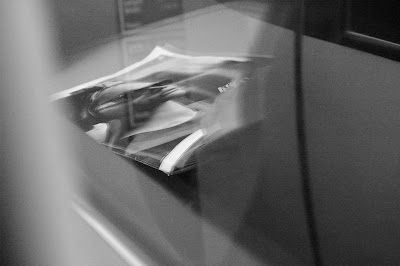
Image of Samuel Beckett outide the Royal Court Theatre, London, 1976 (c) Jane Bown
For me, the Observer photographer, Jane Bown, is the master of the black and white portrait. I love the story she tells of her tutor at the Guildford School of Art who told her that if she was going to photograph a turnip, then pick a good one. She picked some of the best. I still believe that black and white film excels for a portrait. I'm still experimenting with cameras, films and aperture settings.
I have a Nikon F100 35mm SLR film camera, a Nikon D70 digital SLR and a Hasselblad 500 medium format film camera. They are heavy, rugged and cumbersome - I like this type of camera that can be dropped on concrete and bounce back - they would not necessarily be the tools of choice for a street or documentary photographer, but I do practice these skills and hope I'm improving. It's the most difficult to walk around with a camera round your neck as if it was part of you. I'm not that good at sneaking around taking a shot of someone asleep on a bus but I do admire people who can do that. I do my best to make people relaxed and try and get them to be themselves and feel natural. I try and use 85-105mm lenses for portraits. Sometimes I take shots of people with a 300mm lens - this is less intrusive and people are more likely to be themselves if they don't feel a camera sticking in their face.
I think it is one of the delights of photography to experiment - there's no right or wrong answer. AA photogarph is 50% the skill of the photographer and 50% the way the subject is feeling. If the two elements combine well then a good result that will please both parties is more likely to result. Just make sure you pick a good turnip as the subject!





